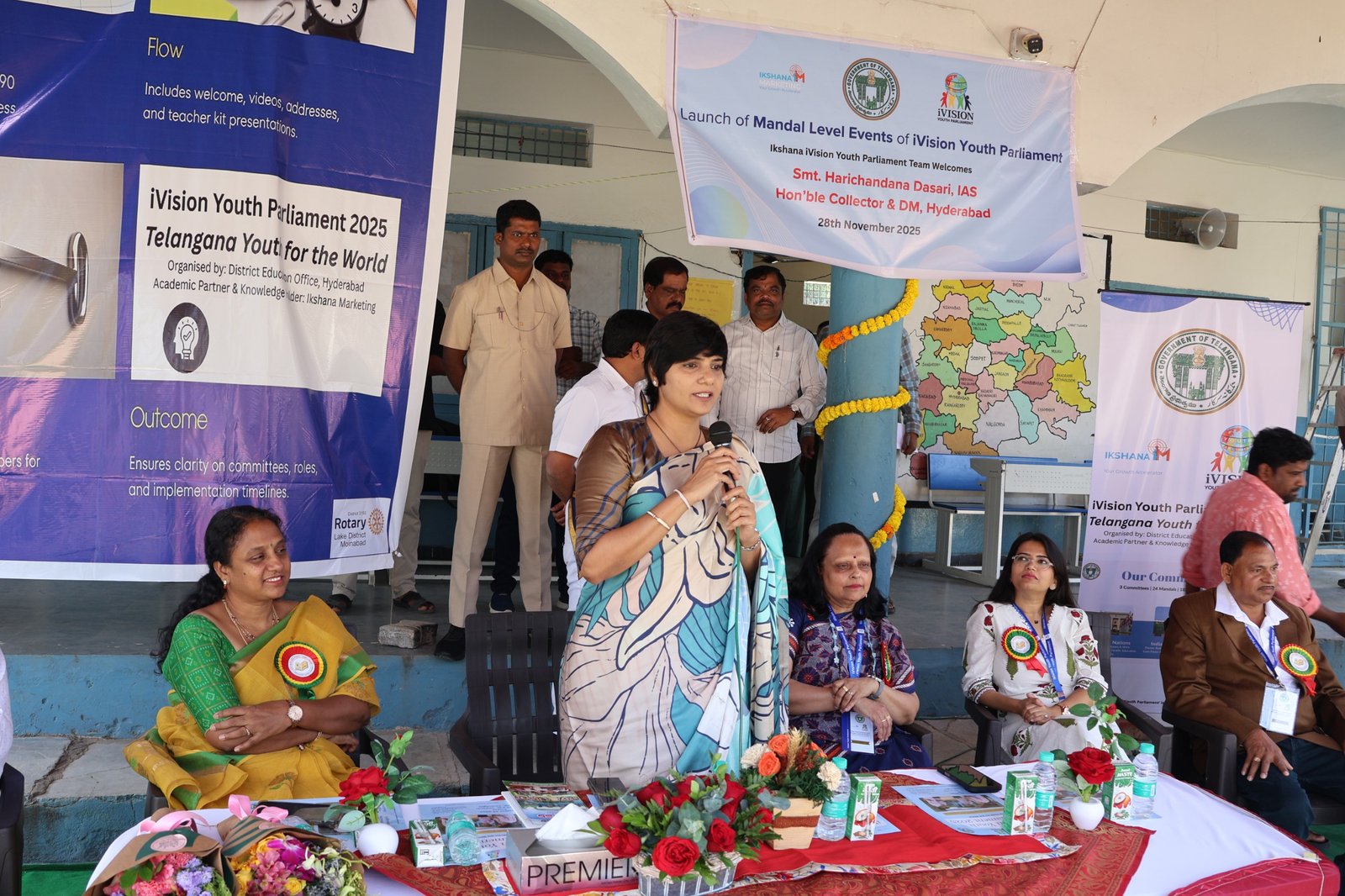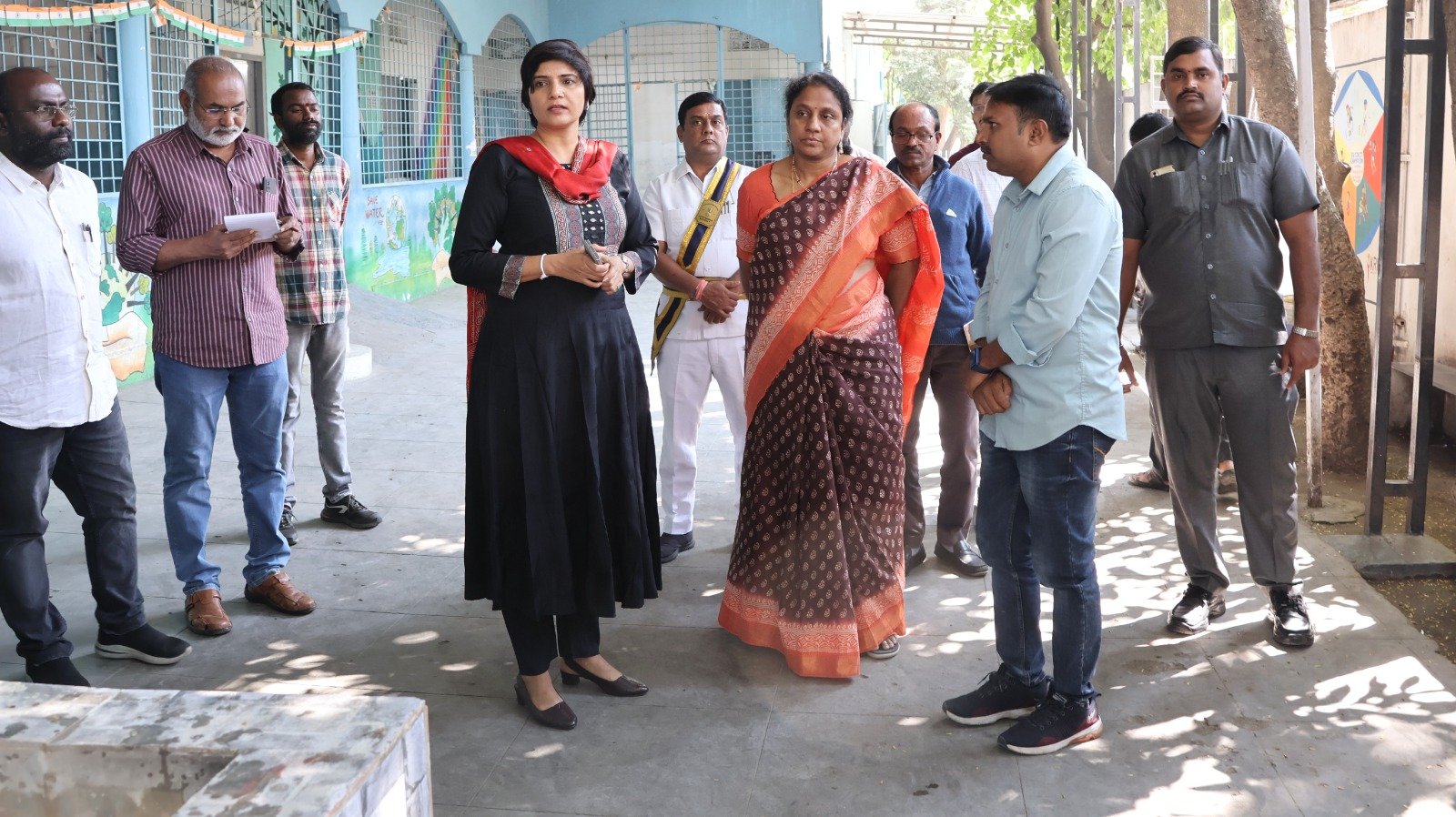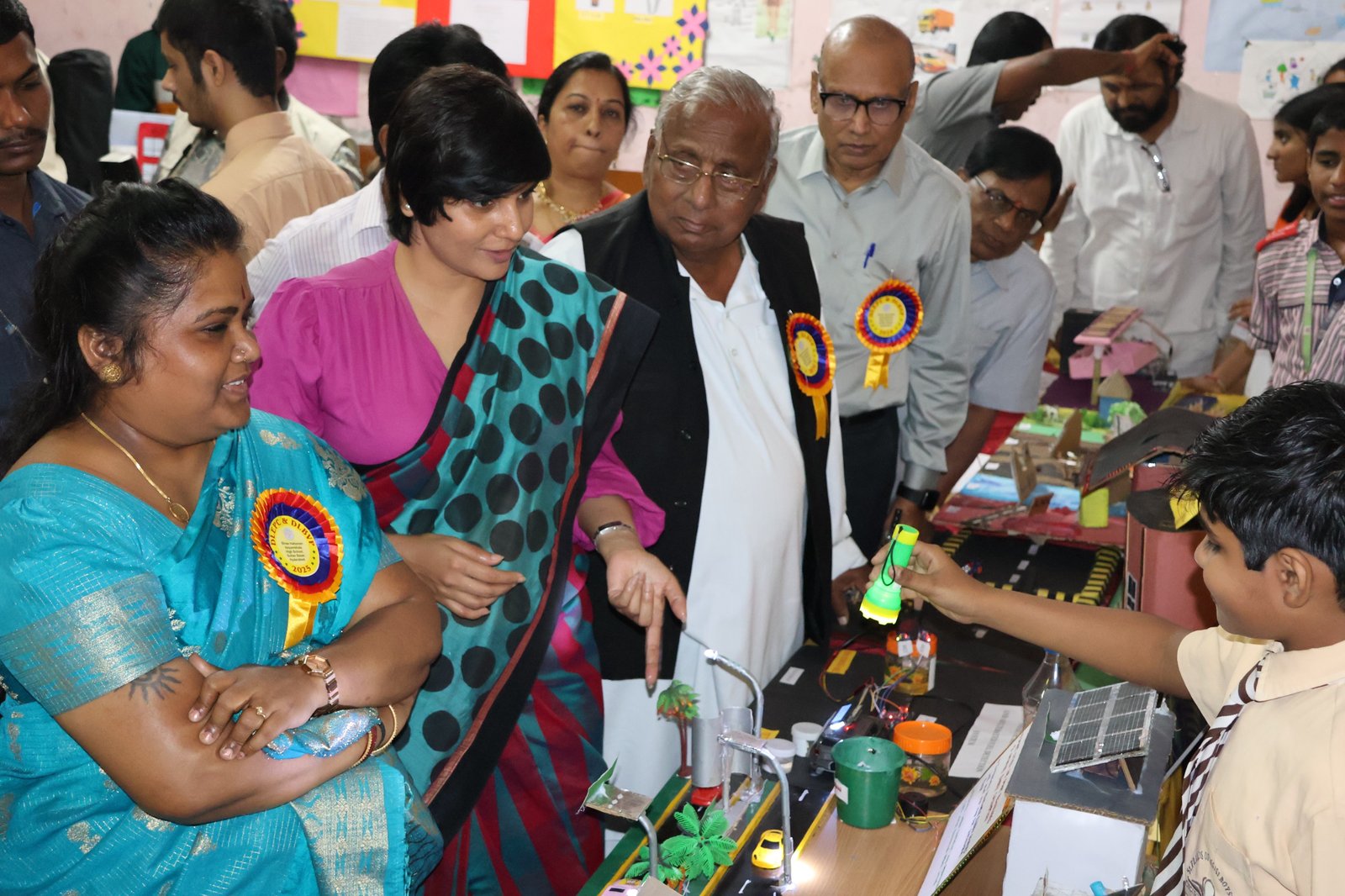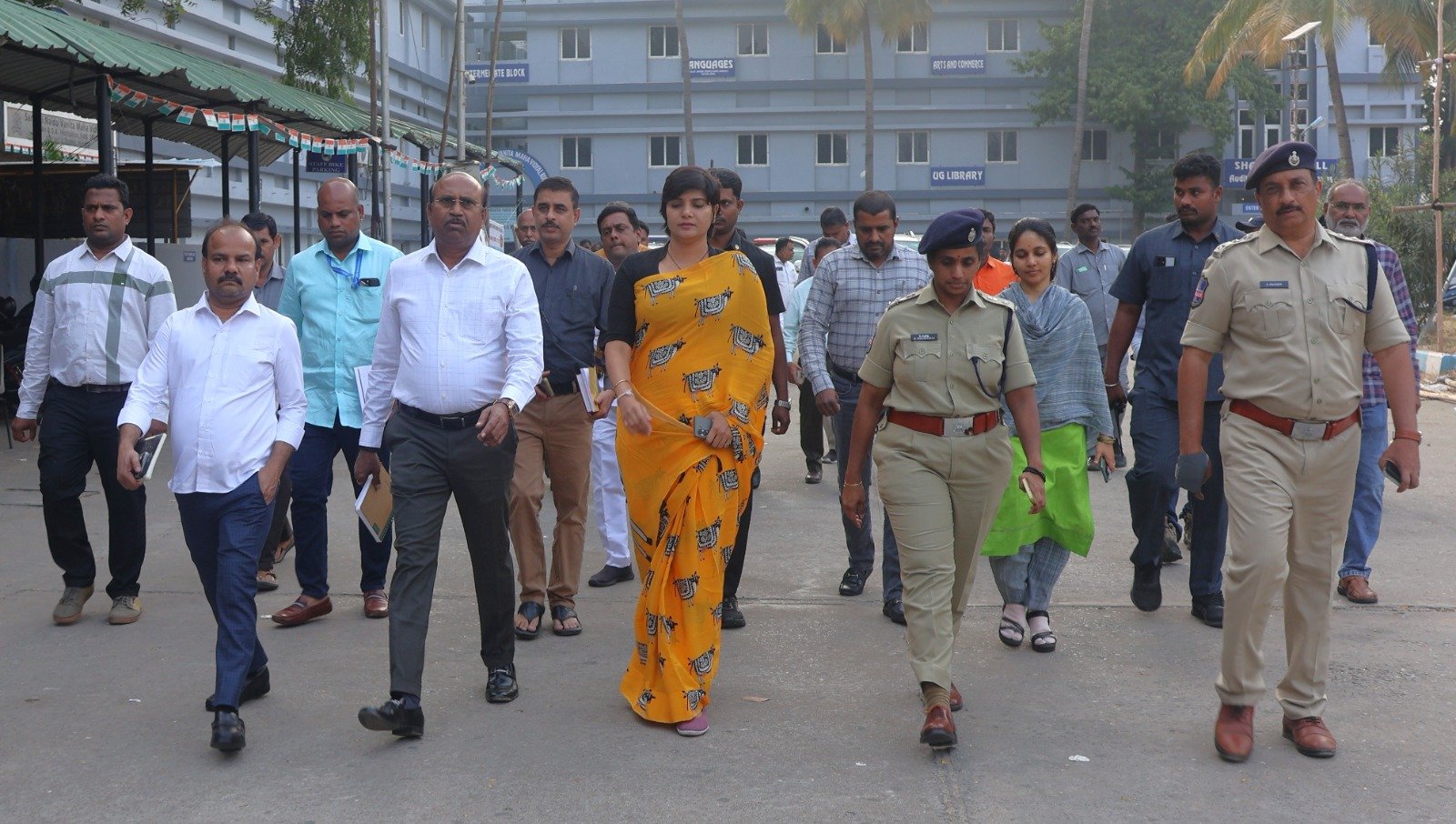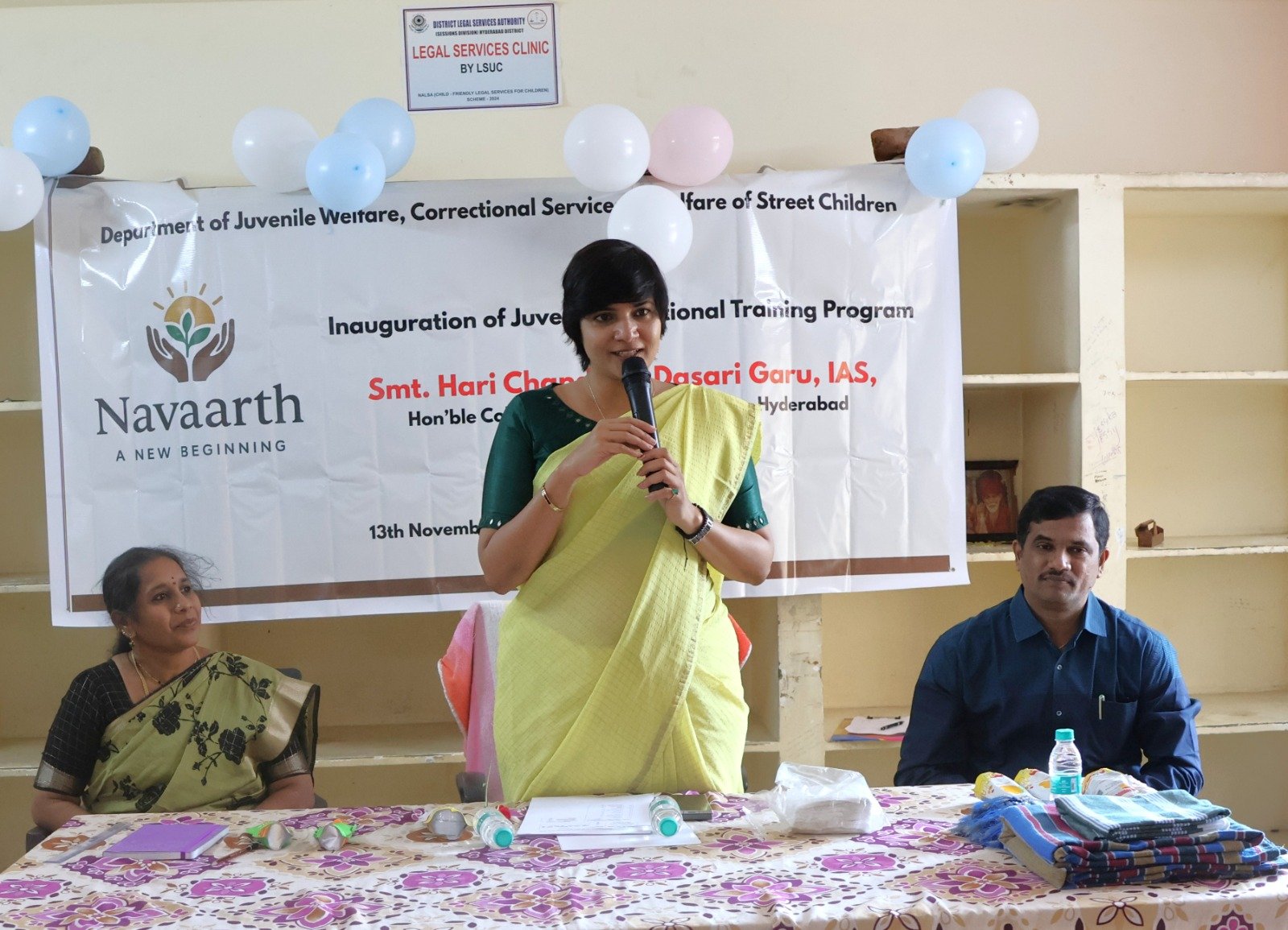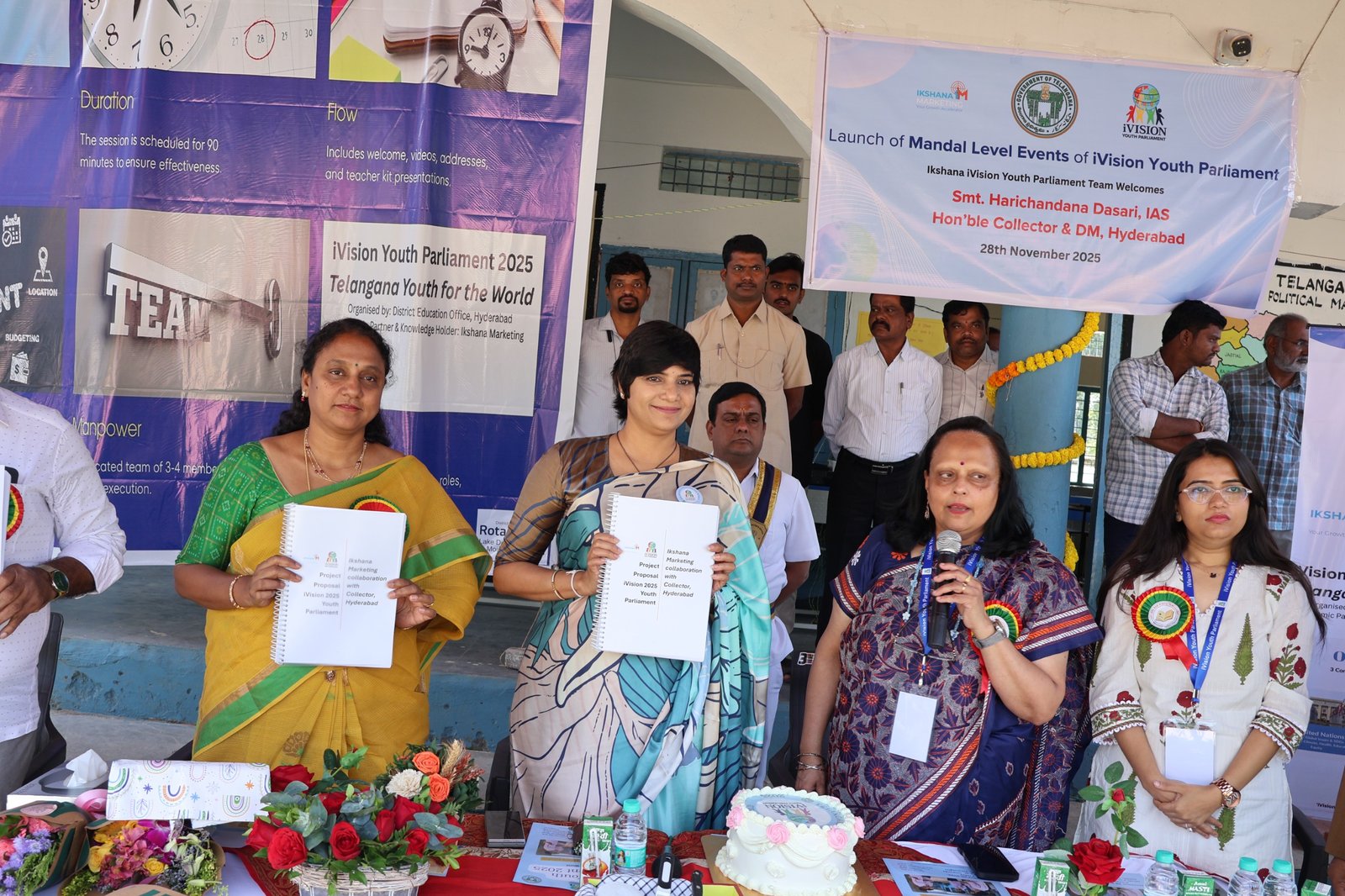
Top 10 Mistakes to Avoid Before UPSC Prelims 2025
Every year, lakhs of aspirants prepare for the UPSC Civil Services Examination with unwavering dedication, driven by the dream of serving the nation. Yet, when the Preliminary results are declared, only a fraction moves forward. Surprisingly, the difference between success and failure is rarely about intelligence or effortit’s about avoiding the wrong turns on the path.
UPSC Prelims is an academic test and a strategic, psychological, and behavioral examination. It rewards knowledge, clarity under pressure, disciplined planning, and emotional resilience. While aspirants often focus on what to study, they overlook what not to doand that is usually where the real danger lies.
From ignoring the official syllabus to taking the CSA the T lightly, from hoarding YouTube videos to burning out in the final weeks, there are recurring traps that aspirants fall into year after year. These aren’t rare terrors; they are patterns of failurepredictable, preventable, and correctable.
This guide presents the Top 10 Mistakes to Avoid Before UPSC Prelims 2025 not as a checklist but as insights rooted in real exam behavior, training psychology, and the ethos of civil service preparation. Drawing inspiration from the training of IAS officers at institutions like LBSNAA, where future administrators are trained to think under pressure, act ethically, and lead with balance, these mistakes highlight what the exam truly demands.
Before focusing on how much more to study, ensure you have a strong foundation by removing the sabotaging habits. Being as competitive and unforgiving as UPSC, avoiding mistakes is just as important as mastering the content.
Top 10 Mistakes to Avoid Before UPSC Prelims 2025
Ignoring the Syllabus and Previous Year Papers
A deep respect for the syllabus and a sharp understanding of previous year’s papers (PYPs) are at the core of a successful UPSC Prelims strategy. These two pillars define the boundary and direction of your preparation.
UPSC is not just a knowledge test but a relevance test. The syllabus is not merely a listit’s a brief that signals what the commission expects from a future civil servant. Ignoring it leads aspirants down a dangerous path of information overload and random topic-hopping.
Many first-time candidates, especially those under peer pressure or influenced by social media trends, study topics far from what the Prelims demand. They gather more information than insight. For example, reading deep political theory for Polity or memorizing all climate treaties without understanding which ones UPSC tests wastes precious energy.
At the same time, the previous year’s question papers offered invaluable clues into UPSC’s patterns. They are not just practice tools; they are diagnostic guides. They reveal how questions are framed, the depth of conceptual understanding required, and the recurring areas of interest, such as Indian Constitution articles, ancient culture, or economic surveys.
Just like trainee IAS officers at LBSNAA are trained to assess ground realities before making decisions, aspirants must begin their preparation by decoding the exam terrain. This includes carefully mapping each syllabus line to a relevant source (e.g., “Salient” features of the Indian Constitution” to Lax” Srikanth Srikanth, “Climati” regions” to GC “long) and then cross-checking how that topic was treated in actual questions.
Serious candidates revisit the syllabus and PYPs multiple times during their journey, using them to filter out distractions and prioritize effort. This discipline’s clarity separates those who clear Prelims from those who wander through mountains of content.
Avoiding this mistake is not optional. It’s in your Prelims mission.
Over-reliance on Coaching or YouTube Videos
Guidance is essential in the UPSC preparation journey, but overdependence on external sources like coaching classes or YouTube channels can silently erode the self-reliance that this exam demands.
Coaching institutes, toppers’ strategies, and free online crash courses have become ubiquitous. They promise shortcuts, rank-boosting tips, and “complete” coverage in 30 days. While some of this content is genuinely helpful, blind consumption without discretion is where aspirants lose their edge.
UPSC doesn’t know who watched the most videos. It rewards the one who can think independently, integrate concepts across disciplines, and make judgment calls under uncertainty. Over-relying on coaching materials often leads to passive learning, where the student listens, highlights, and underlines but rarely reflects or questions.
Just like an IAS officer at LBSNAA is expected to move beyond training modules and apply judgment in the field, UPSC aspirants must move beyond hand-holding and cultivate their understanding. A candidate who has watched 100 hours of economics lectures but cannot answer a fundamental concept of inflation is misled by the illusion of preparedness.
Moreover, YouTube algorithms tend to seduce aspirants into a cycle of endless strategy videos, “top 100 “questions, or “la” t-mi” ute hacks.” Instead of building depth, aspirants become content collectors, overwhelmed by quantity but hollow in retention and application.
Coaching can guide you. Videos can explain a topic. But neither can replace your handwritten notes, active recall sessions, daily MCQ practice, or the ability to connect dots across subjects.
The exam tests your clarity, not your coach’s. Avoiding this mistake means striking a balanceuse external help as a ladder, not a crutch. Learn to take ownership of your preparation, consolidate your material, and trust your analytical ability over-rehearsed content.
Because there will be no YouTube mentor or coaching in the exam hall, sironly your mind, choices, and calm.
Neglecting CSAT (Paper II)
In the intense Focus General SFocuss Paper-IHistory, Polity, Economy, Environment, many aspirants commit the critical error of neglecting CSAT, treating it as an afterthought or a mere formality. This overconfidence has become one of the silent eliminators in the Prelims stage.
Since the CSAT is a qualifying paper requiring only 33% marks (66 out of 200), it’s easy to assume that basic schooling-level aptitude is enough. However, UPSC doesn’t deal with simple textbook arithmetic or high-school English. The difficulty level of the CSAT has gradually increased, especially in recent years, making it a hidden trap for those who underestimate it.
Consider a trainee officer at LBSNAA tasked with crisis management in a districthe must be quick with numbers, reason through ambiguity, and comprehend complex documents under pressure. Similarly, CSAT tests your decision-making speed, comprehension accuracy, and logical clarity, all under tight time constraints.
Due to a lack of regular math exposure, many humanities background aspirants struggle with quantitative aptitude, especially in topics like time-speed-distance, data interpretation, and probability. On the other hand, even science graduates sometimes falter in comprehension passages, where dense language and tricky answer options demand focused attention.
The most dangerous part? CSA. The T often goes unpracticed until the final week; by then, it’s too late. Despite scoring 110+ in Paper-I, many bright candidates have failed to clear Prelims solely due to CSAthe T.
Preparation for CSAT does not require a coaching module or a 300-page manual. It needs consistencya weekly practice routine, mock tests under time pressure, and a basic formula sheet for revision. Regular newspaper reading and timed passage-solving help develop both speed and accuracy for comprehension.
UPSC Prelims is not a one-paper gate. Both papers are mandatory, and CSAT deserves the same strategic attention. Avoiding this mistake means recognizing CSAT not as a backup paper but as a barrier that will quietly filter out the overconfidence.
Clearing Prelims is not about being brilliant in one paperit’s about being complete in both.
Not Revising NCERTs and Standard Books
One of the most commonand costlymistakes aspirants make before UPSC Prelims is underestimating the power of revision and overestimating the need for newer sources, in the mad race to “cover ” everything, many neglect what matters the most: mastery of NCERTs and standard books.
UPSC isn’t for encyclopedic minds. It rewards those who can retain, recall, and apply concepts with clarity. Reading Laxmikanth once or flipping through Spectrum casually will not help when the options in the question paper are closely worded and demand precision.
Just as trainee officers at LBSNAA are drilled repeatedly through simulated fieldwork and repeated case study discussions to internalize learning, aspirants must revisit the same books multiple times. The goal is not just to read a topic but to own it.
NCERTs, often seen as too basic, are, in fact, the bedrock of conceptual clarity. For subjects like Geography, Politics, Economy, and Environment, they provide definitions, diagrams, and explanations that UPSC subtly builds its questions upon. Ignoring or treating them as one-time reads is like neglecting the foundation of a building and expecting it to stand firm during an earthquake.
Standard bookssuch as Indian Polity by M. Laxmikanth, Modern India by Rajiv Ahir, or GC Leongrequire at least 3–4 rounds of revision to move from passive reading to active recall. Without this, even the most diligent aspirant will blank out when two similar options test subtle differences, like the powers of the Rajya Sabha versus the Lok Sabha or the features of tropical versus subtropical cyclones.
Moreover, revision is not just about going over underlined lines. It’s asking questions, rethinking what you’ve done before, and reinforcing your weak spots. Many aspirants read more to feel productive, but purposeful repetition makes the difference.
Avoiding this mistake means committing to a planfewer sources more profound understanding. The Prelims are a test of memory as much as logic. And when the pressure peaks on exam day, only what you’ve rehearsed repeatedly will stand firm.
Because in UPSC, it’s not about how much you’ve studied but how much you remember when it matters most.
Ignoring Current Affairs or Following Too Many Sources
UPSC Prelims is no longer just about static factsit’s a challenging test of your awareness of the world around you, filtered through the lens of the syllabus. One of the gravest errors aspirants make is either completely ignoring current affairs or drowning in an ocean of unfiltered material from multiple sources.
Many first-time candidates assume the Prelims are about memorizing NCERTs and standard books. Still, UPSC consistently integrates contemporary issues with static subjectswhether it’s a nation’s environmental treaty tied to Geography or an amendment in Politics influencing governance-based questions. Ignoring current affairs is like appearing for a battlefield drill without checking the latest terrain mapyou’re in the dark.
On the other hand, some aspirants swing to the opposite extreme. To “not miss” anything, they download 4–5 current affairs monthly magazines, read multiple news apps, and keep switching between the top news sources. This leads to information fatigue, mental clutter, and poor retention. The mind, overwhelmed by volume, begins to forget even the basics.
Just as officers at LBSNAA are trained to extract actionable insights from vast policy documents and media reports, UPSC aspirants must learn to sift through the noise and focus on relevance. It’s not just knowing every event but understanding what’s not through the UPSC lens.
The innovative approach is to follow one reliable newspaper (like The Hindu or Indian Express) and one trusted current affairs compilation (such as Vision IAS, Insights, or IAS Parliament). Focus on quality, not quantity. Make brief notes, link dynamic topics with static subjects (e.g., connect a new RBI monetary tool to the basics of inflation from the Economy), and revise these notes periodically.
UPSC loves asking questions that are “current” yet conceptual”events that are in the news but require a basic understanding to answer. For instance, if a new Ramsar site is declared, the question might test the concept of wetlands, not the location alone.
Avoiding this mistake means becoming a student of relevance, not a collector of headlines.
Regarding current affairs, depth in fewer things always beats the surface knowledge of many.
Lack of Regular Mock Test Practice
UPSC Prelims is not just a test of knowledge but a battle of precision, pressure, pattern recognition, and performance under time constraints. The most common mistake that derails even well-prepared aspirants is the lack of regular mock test practice.
Many aspirants spend months buried in books, notes, and video lectures, assuming that content mastery alone is enough. But the real test happens not in your notebookit happens when you’re faced with unpredictable MCQs, 120 ticking minutes, and a score threshold that separates thousands of aspirants from the final list.
Mock tests simulate this exact battlefield. Just like trainee IAS officers at LBSNAA are repeatedly trained through field simulations and stress drills to perform under pressure, aspirants must condition their minds to think, eliminate, and decide quickly and clearly. Without this, all preparation remains theoretical.
Candidates who skip regular mocks often struggle with:
- Time management: Spending too long on one section and rushing through another.
- Over-attempting or under-attempting: Misjudging how many questions to attempt to balance accuracy with risk.
- Silly mistakes: Falling into traps that could have been avoided through practice.
- Mental fatigue: Being unable to maintain concentration for the whole 2 hours.
On the other hand, those who take **mock tests seriouslynot just for marks but for diagnosis**sharpen their instincts. They spot familiar traps, recognize UPSC’s style, and develop a personalized strategy (e.g., section-wise time allocation, guesswork discipline, optimal attempt range).
But taking mocks alone is not enough. The real value lies in post-test analysis: Why did you make a mistake? Was it due to poor knowledge, misreading, or overthinking? This feedback loop builds exam intelligencethe decision-making ability UPSC quietly tests.
Avoiding this mistake means integrating mock tests as a core part of your routine, not an afterthought in the final month. Ideally, by the last 60 days, aspirants should have taken at least 25–30 full-length preliminary tests under real exam conditions.
Clearing Prelims is not just about how much you know but how well you can apply what you know when it counts most.
Panicking in the Final Weeks
As the UPSC Prelims draws closer, even the most composed aspirants can fall into the trap of panic-driven preparationa phase marked by anxiety, last-minute content hoarding, and impulsive changes in strategy. This emotional turbulence in the final weeks is one of the most common yet avoidable mistakes.
The final stretch before the Prelims is not just a test of knowledgeit’s a test of personal discipline, clarity of Focus, and confidence in your preparation. Just like trainee IAS officers at LBSNAA are placed in high-pressure simulations to assess their crisis management abilities, the last few weeks test whether an aspirant can stay grounded amidst the noise.
Panicking manifests in various forms:
- Abandoning your revision plan to start something entirely new.
- Switching between multiple current affairs sources at the last minute.
- Consuming topper videos endlessly instead of revising your notes.
- Doubting your preparation and trying to “cover everything” in a week.
This chaotic mindset leads to fragmented retention, sleep deprivation, loss of Focus, and ultimately, poor performance in the actual exam. You don’t know everything. You need to recall what you know accurately and calmly.
The final weeks are your consolidation phase, not exploration. It’s time to revise your NCERTs and standard books, review your mock test mistakes, and practice clever guessing techniques. The brain needs repetition, not overload, to perform well under pressure.
Additionally, it’s crucial to protect your mental space. Avoid social media debates, rank predictions, or comparisons with others. Anxiety is contagiousand comparison is the fastest way to feel like you’re doing well, even when you’re you’re.
Preventing this mistake requires a clear revision timetable, a calm daily routine, and trust in the process you’ve followed. Focus on what you focus on, such as your revision mock practice and mindset. Let go of what you can’t or shouldn’t: paper difficulty or cutoff prediction. Use the final weeks, and don’t judge how much you study; you determine how well you will deliver on the most important day of your UPSC journey.
Ignoring Negative Marking Strategy
UPSC Prelims is about what you cut off and what you choose to attempt. A common but deadly mistake many aspirants make is ignoring the reality of negative marking, walking into the exam with no clear attempt strategy. This mistake silently kills even well-prepared candidates.
Each wrong answer in the Prelims costs you one-third of a mark, and this penalty adds up quickly. Aspirants who casually tick 90+ questions without evaluating certainty levels often find themselves with impressive accuracy on what they got right but a net score that’s sneakily low. Unlike sub-cutoff exams, Prelims rewards strategic thinking. Just as trainee IAS officers at LBSNAA are trained to make risk-balanced decisions in uncertain field situationsoften with incomplete informationUPSC expects aspirants to navigate the cutoff with caution and logic, negative marking usually stems from two extremes:
- Overconfidence: “I’ll do everything. Something will click.”
- Panic: “I can’t “lecan’tny questionI need to maximize my chances.”
Both are equally dangerous. UPSC questions are designed with subtle trapstwo options that look correct, unfamiliar phrasing, or data-driven distractors. Without a conscious elimination strategy or self-awareness of one’s accuracy range, reckless attempts often lead to a heavy penalty.
Developing a personalized attempt strategy is key. This is where mock tests come innot just to check your knowledge but to understand your comfort zone for attempts. For some, 75–80 quality attempts yield success; for others, 85–90 might be viable. The aim is not to attempt moreit’s to be smart and wise.
Use elimination techniques. Learn to spot extreme or exaggerated language in options. Mark only when you eliminate at least two options confidently. Never guess completely blindUPSC rarely rewards that.
Avoiding this mistake means internalizing this simple truth: Prelims is a game of net score, not raw courage. A 120-mark preparation with a poor strategy can easily result in a 90-mark reality.
Clearing Prelims is not about how many questions you answer but how you respond without answering incorrectly.
No Clear Timetable or Revision Plan
In the final leg of UPSC Prelims preparation, clarity of direction becomes more important than the quantity of study material. Yet, many aspirants walk into the last 30–45 days with no structured timetable, no prioritized revision cycle, and no strategy to consolidate what mistakes they have made that prove fatal.
UPSC Prelims is not about studying everythingit’s about selecting the right things at the right time. The recall doesn’t happen by chance. It requires planned repetition, spread over weeks timed for memory retention. Without a timetable, preparation becomes reactive and scattered, revising whatever feels urgent rather than essential.
Imagine a trainee officer at LBSNAA sent into the field without a schedule, a route map, or an objective. He may be hard-working, but he’ll waste his time and energy without a plan. Similarly, aspirants who wake up each day unsure whether to revise Polity, take a mock test, or read current affairs fall into a cycle of confusion and burnout.
Without a revision plan:
- Important subjects like Environment, Art, & Culture often get sidelined.
- Notes remain unread; test solutions go unanalyzed.
- Time is wasted in starting new topics instead of revisiting known ones.
A firm timetable breaks the syllabus into manageable daily goalse.g., Polity in 3 days, followed by Economy in 2, then a day for complete mock analysis. A good revision plan includes weekly full-length mocks, daily current affairs recall, and a rapid review of facts and figures using your short notes.
Equally important is buffer timeplanning for revision gaps, stress days, or unexpected tasks. A rigid plan fails, but a flexible and realistic one helps you stay on track without guilt or panic.
Avoiding this mistake means treating revision like a missionobjective-based, deadline-driven, and result-oriented. It means knowing exactly what you’ll be using each day and how you’ll manage your retention.
Because the difference between “studied” and “ready” is one thing: how well and how often you’ve done it, in time, with Focus, and with a Focus
Underestimating the Role of Mental and Physical Health
In the high-stakes environment of UPSC Prelims preparation, aspirants often fall into the trap of glorifying exhaustionpulling all-nighters, skipping meals, and sacrificing sleepall in the name of dedication. They fail to realize that undermining mental and physical well-being is not a mark of seriousnessit’s a strategic mistake that silently weakens their chances.
UPSC doesn’t test knowledgeit tests stamina, Focus, clarity, and decision-making under pressure. These are not possible in a deprived body or a mind clouded by anxiety. Just as trainee IAS officers at LBSNAA are trained to stay alert, physically fit, and emotionally resilient in real-life crisis scenarios, aspirants must understand that self-care is not optional but essential.
Candidates often ignore basic health routines in the last 2–3 months:
- Skipping meals or eating junk due to erratic study hours.
- Reducing sleep to “cover m” in the syllabus.” Avoiding exercise, thinking it wastes precious time.
- Neglecting mental health, bottling up anxiety, burnout, and fear of failure.
The result? Poor retention, fatigue during revision, falling immunity, panic during mocks, and a complete breakdown in the final week. It doesn’t matter how much you studiedif you can’t stay consistently calm and physically stable on test day, it all collapses at that moment.
Maintaining health doesn’t require significant changes. It requires discipline:
- Fix your sleep cycleat least 6–7 hours of restful sleep.
- Eat balanced mealsbrain-friendly foods like fruits, nuts, and proteins.
- Include 15–30 minutes of light physical activitywalks, yoga, or stretching.
- Practice breathing techniques or meditation to manage stress.
- Speak to a mentor or peer regularlydon’t do it to yourself emotionally.
Your mind is your biggest asset in this exam, and it functions best in a well-nourished, well-rested, and emotionally steady state.
Avoiding this mistake means making your health part of your preparation strategy. On Prelims Day, success doesn’t depend on the most tiredit goes to the most focused, balanced, and calm-minded individual.
In the end, remember: your performance is only as strong as the body and mind you carry into that examination hall.
Conclusion
As you move closer to UPSC Prelims 2025, your greatest strength lies not in how many books you’ve read and how many hours you’ve put in how smartly you’ve workedwith strategy, self-awareness, and emotional balance. Avoiding these 10 common mistakes can significantly increase your chances of success by keeping your preparation focused, your mind calm, and your confidence intact.
Remember, the exam hall tests more than your knowledgeit tests your choices under pressure, your ability to manage uncertainty, and your overall composure. Prepare not just as a student of subjects but as a future officer in trainingdisciplined, adaptable, and mentally fortified.
In the UPSC race, those who rise are not the ones who never stumbledbut those who knew what to avoid, when to pause, and how to stay the course till the end.
Frequently Asked Questions (FAQs)
1. Why is understanding the UPSC Prelims syllabus so crucial?
The syllabus defines what to study and what to skip. Ignoring it leads to scattered preparation and poor Focus on high-probability areas.
2. How do the previous year’s question papers help in preparation?
They reveal patterns, frequently tested topics, and the exam’s difficulty level, helping aspirants align their study material accordingly.
3. Is coaching or YouTube necessary for cracking UPSC Prelims?
While they can provide guidance, over-reliance without personal understanding and revision often leads to passive learning and confusion.
4. Why do many aspirants ignore CSAT (Paper II)?
Since it’s only satisfying, aspirants underestimate its difficulty. However, failing the SAT despite good GS scores is a common reason for disqualification.
5. How can I prepare effectively for the CSAT paper?
Practice CSAT weekly for at least three months before the exam, focusing on comprehension, basic math, and logical reasoning.
6. Why are NCERTs and standard books like Laxmikanth and Spectrum important?
They offer conceptual clarity and are aligned with the exam’s examination of fundamental understanding.
7. How many times should I revise my books before the Prelims?
Ideally, 3–4 complete revisions and mock test practice will ensure long-term retention and confident recall during the exam.
8. How should I approach current affairs for Prelims 2025?
Follow one reliable newspaper and one monthly compilationlink current events with the static syllabus for better context and retention.
9. What is the risk of referring to too many current affairs sources?
It causes overload, confusion, and poor retention. Quality matters more than quantity in current affairs.
10. How necessary are mock tests in Prelims preparation?
Mock tests simulate the exam environment, improve time management, sharpen question analysis, and help build strategy.
11. How many mock tests should I take before the Prelims?
Under exam conditions, at least 25–30 full-length GS mock tests and 8–10 CSAT tests should be taken.
12. What’s the way to analyze mock tests?
Go beyond scoresreview incorrect answers, understand the logic, note tricky areas, and identify topics needing revision.
13. Why do aspirants panic in the final weeks before Prelims?
Fear of missing out (FOMO), last-minute syllabus rush, and peer pressure often trigger anxiety and derail foFocus14. How can Focusaycbe be more focused in the last month?
Stick to a clear revision plan, avoid comparing with others, practice breathing or mindfulness techniques, and trust your preparation.
15. What is negative marking, and how does it affect my score?
Each wrong answer deducts one-third of a markexcessive guessing without an elimination strategy reduces the net score.
16. How should I approach question attempts to avoid heavy negative marking?
Attempt only when confident or able to eliminate at least two options. Practice your attempt range through mock tests.
17. Why is a revision timetable important before Prelims?
It ensures a balanced coverage of all subjects, builds a structured routine, and prevents last-minute chaos.
18. How can I build an effective preliminary revision plan?
Divide your weeks into subject slots, intersperse mock tests, keep buffer time for weak areas, and plan multiple rounds of revision.
19. How does poor physical or mental health affect Prelims performance?
Low energy, poor Focus, memory lapses, and exam-day anxiety often result from neglecting sleep, nutrition, and stress management.
20. What health habits should I follow during the last preparation phase?
Prioritize 6–7 hours of sleep, eat balanced meals, do light physical activity, and avoid emotional isolation by staying connected with mentors or peers.

